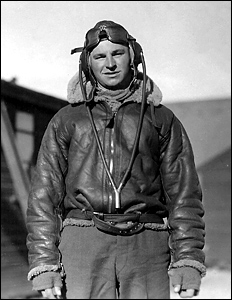The most celebrated squadrons in this field were 101 Squadron at RAF Ludford Magna, 192 and 462 Squadrons at RAF Feltwell and later, RAF Foulsham.
No. 100 Group RAF specialised in RCM techniques - which Brian belonged to.
 Squadron pioneered Bomber commands RCM operations. Squadron pioneered Bomber commands RCM operations.
They flew more sorties and suffered more loses than any other RCM Squadron. They were first squadron to fly Ops, in the 100 Group. A separate group of American aircrew (USAAF) flew Lightnings with the squadron
MZ342 was operating as a specialist bomber support unit and was detailed to operate in the Stettin area during an operation to the oil refinery at Wanne-Eickle on the night of 08-09 February 1945. Stettin (German spelling) right on the German Polish coastal border is now under Polish control and is renamed Szczecin, a very scenic historical place. Apparently it was ethnically cleansed of Germans after WWII.
MZ342 was being used as a (RCM) aircraft and carried an additional crew member who was fluent in German and operated radios tuned to German frequencies to confuse the German controllers and the night-fighter pilots by issuing some false instructions and countermanding others.
It was involved in a collision with Lancaster PD376 of 625 Squadron flown by P/O D.E.J. CHALKLEY, which was able to continue back to the UK. Sadly MZ342 crashed into the sea with total loss of life. Lancaster PD376 was not seriously damaged. Although an overnight operation it took off on the 08th and was lost at 01:20 on the 09th so the date used will depend on which unit prepared the report. Some used crash date others used the date of take off.
Photo of Brian Leonard in flying gear taken May 15th 1943 DENMARK
There are many books published by the Danish about allied airmen "who put their lives at risk for Danish freedom". In Denmark the Danish Resistance Museum keeps alive the memory of the struggle against Nazism and all those who assisted Denmark during those terrible years 1940-1945. I am at present in contact with retired Colonel Helge William Gram, (1948 - 1992), the last six years as Military Aide-de-Camp to Her Majesty Margrethe II (the Queen of Denmark). Colonel Gram has arranged a competent diving firm from West Jutland, Denmark to check position 56 17N 07 48E in either July or August 2004 when weather conditions are favourable. Position is about 6 miles off the coast of West Jutland.
AIR GUNNER BRIAN F. WOODS was found drifted ashore on a location on Danish North Sea coast, named Strandlen 24 on Aaberg Forstrand date 21 August 1945. He was buried at the Husby Cemetery on 24 August 1945.
Husby is a village in western Jutland just south of the Nissum Fjord in Denmark.
AIR BOMBER F/SGT DOUGLAS W. WEBB was found drifted ashore on a location on Danish North Sea coast, named Haurvig date 21 February 1946. He was buried at Esbjerg Cemetery in Denmark. The two airmen were found a long time after the loss of the aircraft which is not unusual in the sea around Denmark. Weather conditions, heavy tides and storms could have broken up the wreck on the bottom of the North Sea. In this situation the supposed place of crash is not far from where the bodies were found. During the war, the German military had built radar installations and gun installations along the Danish North Sea coast. The local people and fishermen had a very restricted access to the coast. Also the German military ordered all civilians to wear identification cards with a photo.
The limited access to the coast made it possible for German soldiers to do some unchristian acts (after order from Hitler in 1944). At the end of the war, several dead allied airmen and navy people washed ashore, or were found buried on the beach or in the sand dunes. They ensured that no airman would be able to be identified, even if his body was discovered.
Esbjerg is a major port on the west coast of Jutland. From the harbour area, travelling north towards Hjerting on Hjertingvej, take the right fork into Gravlundvej and the cemetery is on the right side. Approaching the cemetery on Gravlundvej the CWGC plot can be seen on the right just behind the red brick chapel.
Commonwealth forces fought no land campaign in Denmark during WWII, but from the German occupation on 9 April 1940, the air forces were active in Danish skies with special operations and raids on strategic targets, supplying the Danish resistance, anti-submarine patrols and bombing missions over northern Germany. Many airmen were killed in these operations and lie buried in churchyards and cemeteries all over Denmark. Esbjerg (Fourfelt) Cemetery contains a war graves plot of 272 Commonwealth burials of the Second World War, 25 of them unidentified. |